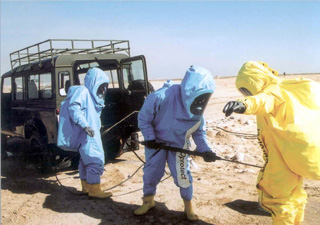View
| IAEA/RCA ACM on Radiological Risk Assessment Train Counter Measures to Minimize Radiation Doses 18-21 December 2006, Beijing, China | |||
|---|---|---|---|
|
Name
admin |
Date
2006.10.18 |
Views
4127 |
|

IAEA/RCA Project on Assessment of Radiological Risk has the objective to develop the capacity in Member States to assess the consequences of accidental radiological releases in order to take counter measures to minimize the radiation doses to the population.
Assessment of the consequences of radiological accident scenarios would be necessary to take counter measures to reduce the radiation doses to the affected populations, often farmers and peasant populations. The models used for this purpose should be based on accurate climatic and transport parameters and appropriate shielding factors.
The purpose of the meeting is to provide recommendations on guidelines for setting and measuring the level of competencies for those who will be trained in National Training Programmes conducted using the training package of the Regional and National Training Courses on Radiological Risk Assessment conducted in June 2006. It will also review and make recommendations concerning the manner in which the radiological consequences have been or could be incorporated into national emergency response plans.
Accordingly, the meeting will come up with outputs such as 1) enhanced knowledge of current and future national training in radiological consequence assessment in participating Member States, 2) an overview of how skills in radiological consequences assessment have been or could be incorporated into national emergency response plans, and 3) recommendations on guidelines for setting and measuring the level of competencies for participants undertaking training in radiological consequence assessment.
For further information, contact Mr. LIU Senlin at [email protected].
Attachments



